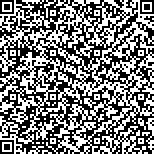| 本文已被:浏览次 下载次 |

码上扫一扫! |
|
|
|
| Remediation mechanism of guar degrading bacteria on hydraulic fracturing fluid damage |
|
MA Xin, LEI Guanglun, WANG Zhihui, DA Qi 'an, ZHANG Xin, SONG Ping, YAO Chuanjin
|
|
(School of Petroleum Engineering in China University of Petroleum (East China), Qingdao 266580, China)
|
| Abstract: |
| Aiming at the pollution and damage of the fracturing fluid on the reservoir in low-permeability or tight reservoir, the mechanism of using microbial method to remediate the formation damage caused by guar gum fracturing fluid was studied.Guar gum degrading strains were isolated and screened by dilution-plate method using guar gum as sole carbon source. Then the bacterial strain was identified through the colony morphology, physiological-biochemical tests and 16S rDNA sequence analysis.And the effect of bacterial degradation on the guar gum fracturing fluid was investigated by the apparent viscosity, average molecular weight change, as well as the degradation of fracturing fluid residueand particle size.. In addition, the effectiveness of microbial remediation was researched through the artificial sand pack. It is found that 7 bacterial strains are isolated and one strain of them is screened for the follow-up tests, which is identified as Bacillus paralicheniformis (CGS). After using this bacterial strain to degrade the guar-based fracturing fluid, the apparent viscosity decreases from 117 mPa·s to 3.3 mPa·s with the degradation rate of 97.00% and the average molecular weight reduces from 119 062 to 28 089. CO2 and N2O are produced in the biodegradation and the active substrate can be synthesized by CGS to degrade the guar gum.And the insoluble residue of guar gum changes from 81.67 mg to 51.67 mg with the reduction rate of 36.73%.The particle size of the insoluble residue decreases from 78.598 μm to 59.905 μm with the reduction rate of 23.78%. The original permeability of sand packs are 108.70×10-3 and 16.90×10-3 μm2, respectively, and the permeability decreases to 5.18×10-3 and 7.93×10-3 μm2 due to the fracturing fluid damage. However, the permeability can be recovered to 92.58×10-3 and 16.32×10-3 μm2 with recovery rates of 85.17% and 96.57% after the microbial remediation. |
| Key words: hydraulic fracturing guar gum bacteria formation damage |
|
|